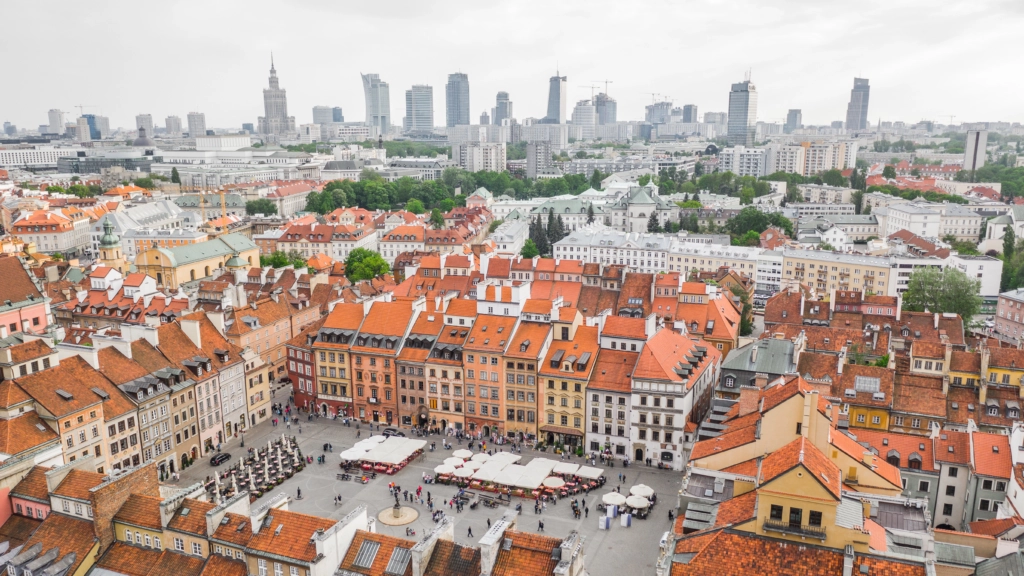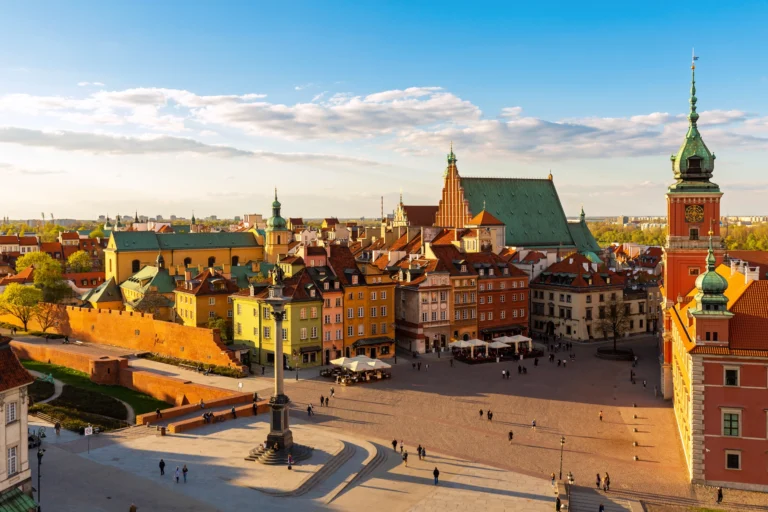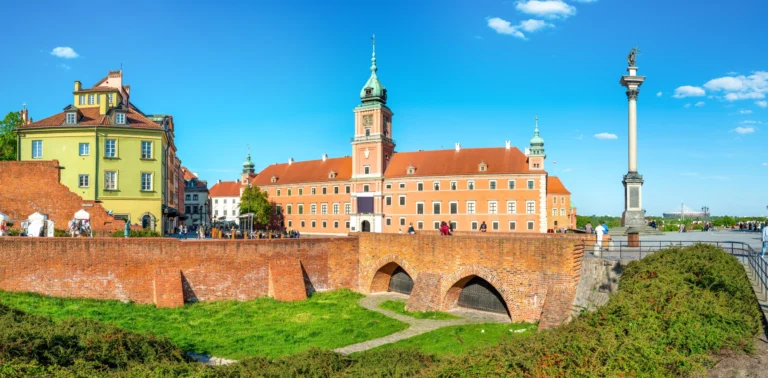Everything You Need to Know About Warsaw
Warsaw, the vibrant capital and largest city of Poland, is a captivating
destination that offers visitors an enriching blend of history, culture,
and modernity. Nestled on the banks of the Vistula River, this resilient
city has risen from the ashes of destruction to become a thriving
political, economic, and cultural center in Europe. In this article, we
will delve into everything you need to know about Warsaw, from its rich
past to its vibrant present.
Why You Should Go There

Warsaw’s Rich History
Warsaw’s history dates back to the 13th century when it was first
mentioned in historical records. Over the years, the city experienced
various periods of foreign rule, including Swedish, Austrian, and Russian
domination. World War II left the city in ruins, with over 85% of its
buildings destroyed. However, Warsaw’s resilience shone through as it
rebuilt and restored many of its iconic landmarks, showcasing the
indomitable spirit of its citizens.
Architectural Landmarks
Warsaw is renowned for its diverse architectural landscape, which features
everything from medieval buildings and Baroque palaces to modern
skyscrapers. Some must-see attractions include:
- Royal Castle – Once the residence of Polish monarchs, this 14th-century
castle was meticulously reconstructed after World War II and now houses
the Royal Baths Park and the Historical Museum of Warsaw. - Old Town – A UNESCO World Heritage site, Warsaw’s picturesque Old Town
is characterized by cobblestone streets, charming market squares, and
well-preserved Gothic, Renaissance, and Baroque buildings. - Wilanów Palace – An exquisite example of Polish Baroque architecture,
this 17th-century palace houses a vast collection of art and antiques, set
amidst beautifully landscaped gardens. - Łazienki Park – A stunning 18th-century park featuring picturesque
landscapes, ornate sculptures, and palace complexes, including the iconic
Amphitheater and the Palace on the Water. - Pilsudski Square – A prominent public square that hosts the Tomb of the
Unknown Soldier, a symbol of Poland’s courageous soldiers, and the
monumental Palace of Culture and Science.
Cultural Attractions
Warsaw is a hub of cultural activity, offering visitors numerous museums,
galleries, theaters, and concert halls that showcase Poland’s rich artistic and intellectual heritage. Some cultural highlights include:
- National Museum – With an extensive collection of Polish art from the 13th to the 20th century, this museum offers insight into the nation’s artistic history.
- Warsaw Uprising Museum – This museum commemorates the 1944 uprising against Nazi occupation and features interactive exhibits and historical artifacts.
- Polish Army Museum – A treasure trove of military history, this museum houses a vast collection of weapons, uniforms, and documents from Poland’s past battles.
- Fryderyk Chopin Museum – Dedicated to the renowned Polish composer and pianist, this museum showcases Chopin’s life, music, and legacy.
- Warsaw Philharmonic Orchestra – As one of Eastern Europe’s most esteemed symphony orchestras, the Warsaw Philharmonic hosts world-class performances throughout the year.
Cuisine and Nightlife
Warsaw’s gastronomic scene offers a delightful mix of traditional Polish dishes and international cuisine. Visitors can savor local specialties like pierogi (stuffed dumplings), żurek (sour rye soup), and
kielbasa (Polish sausage) at local restaurants and markets. The city’s vibrant nightlife is characterized by a wide range of bars, clubs, and live music venues that cater to diverse tastes and preferences.
Conclusion
Warsaw is a captivating destination that offers something for everyone – from its rich history and architectural treasures to its vibrant cultural scene and delicious cuisine. A visit to this incredible
city promises an unforgettable experience that will leave you with lasting memories and a deeper understanding of Poland’s fascinating past and present.





